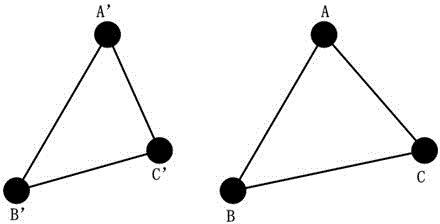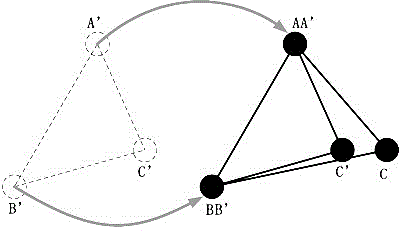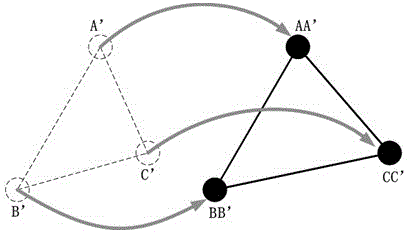Printing defect detection method based on flexible template registration
A technology of printing defects and flexible templates, which is applied in the direction of optical testing defects/defects, can solve the problems of poor tolerance of image geometric inconsistency, waste of product and human resources, and low production efficiency, so as to reduce the risk of waste leakage and improve detection Accuracy, effect of maintaining tolerance
- Summary
- Abstract
- Description
- Claims
- Application Information
AI Technical Summary
Problems solved by technology
Method used
Image
Examples
Embodiment Construction
[0042] The present invention uses rigid registration for initial positioning, and for any pixel in the image to be registered after the rigid initial registration is completed, a corresponding pixel can be found near the same coordinates of the target image (standard image, template). Composition of pixel pairs, the similarity measure between them (the similarity measure of two objects refers to the degree of their proximity to each other in Euclidean space, the commonly used similarity measure calculation methods are Euclidean distance, correlation coefficient or information entropy, etc. ) is higher. The coordinate difference between each pixel pair is recorded. The overall similarity measure and coordinate difference degree of all pixel pairs are used as the optimization objective function:
[0043] C = -C similarity +C deformation ,
[0044] where C similarity is a similar energy term, C deformation is the deformation energy term;
[0045] The similarity measure u...
PUM
 Login to View More
Login to View More Abstract
Description
Claims
Application Information
 Login to View More
Login to View More - R&D
- Intellectual Property
- Life Sciences
- Materials
- Tech Scout
- Unparalleled Data Quality
- Higher Quality Content
- 60% Fewer Hallucinations
Browse by: Latest US Patents, China's latest patents, Technical Efficacy Thesaurus, Application Domain, Technology Topic, Popular Technical Reports.
© 2025 PatSnap. All rights reserved.Legal|Privacy policy|Modern Slavery Act Transparency Statement|Sitemap|About US| Contact US: help@patsnap.com



